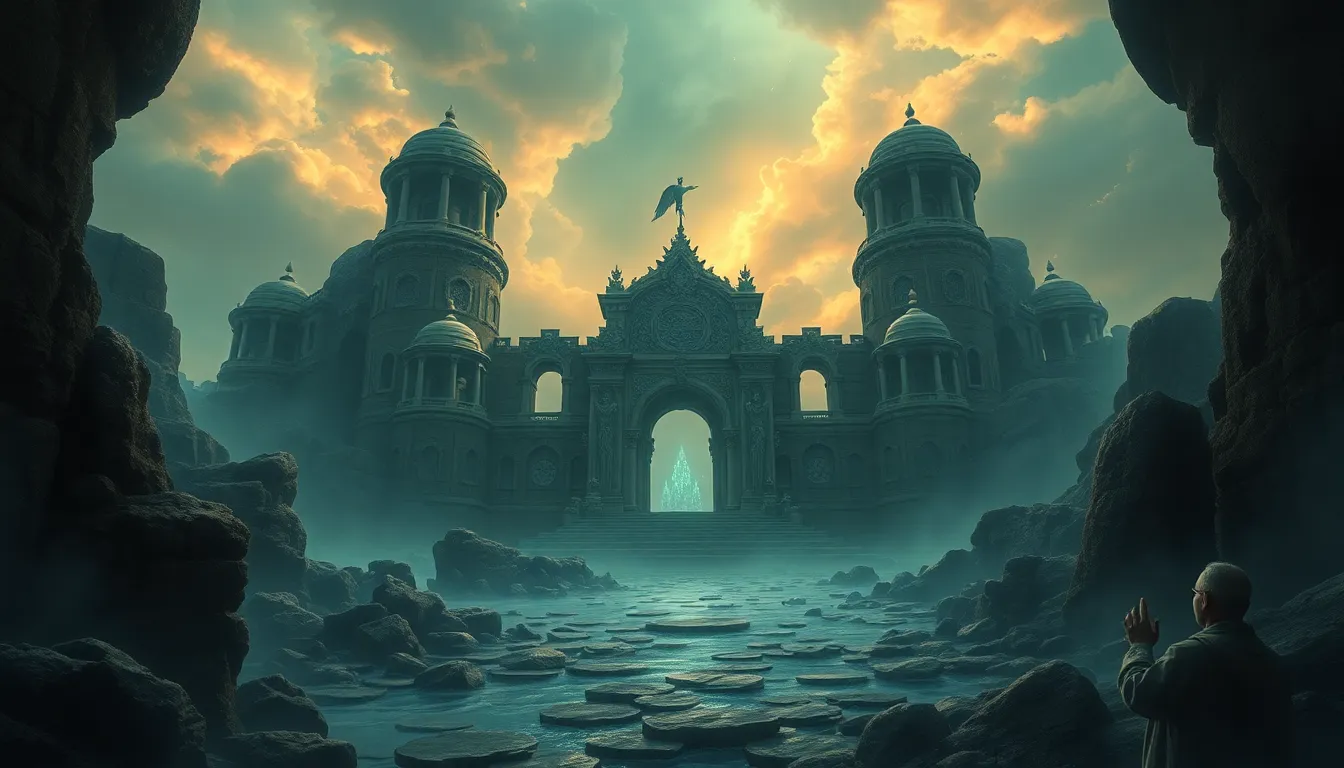The Sacred Chronicles: Tales from Mythological Places
I. Introduction to Mythological Places
Mythological places are locations that hold significant cultural, spiritual, and historical meaning within various mythologies. These sacred spaces are often depicted as realms where gods, spirits, and heroes interact, shaping the narratives that define a culture’s beliefs and values. The significance of these locations transcends mere geography; they are imbued with symbolism and serve as a backdrop for the rich tapestry of human storytelling.
Mythology plays a crucial role in human culture, providing frameworks through which societies understand their world and experiences. It allows individuals to connect with their past, explore existential questions, and navigate the complexities of life. This article delves into the fascinating tales from different mythological places, exploring their origins, characteristics, and the enduring impact they have on culture and creativity.
II. The Origins of Mythological Landscapes
The historical context of mythological geography is deeply intertwined with the evolution of human civilization. As communities formed and expanded, they began to attribute significance to specific locations, often linking them to deities, ancestors, or pivotal events in their history.
- The Intersection of Geography, Culture, and Mythology: Ancient civilizations often shaped their mythological landscapes based on the physical geography surrounding them. Mountains, rivers, and forests became not just natural landmarks but sacred sites that inspired legends and deities.
- Ancient Civilizations and Mythological Places: From the Egyptians venerating the Nile to the Greeks elevating Olympus, the natural world influenced the mythologies created by various cultures, reflecting their values and beliefs.
III. The Enigmatic Realms of Greek Mythology
Greek mythology is rich with tales of gods and heroes, many of whom are associated with specific landscapes that enhance their stories.
A. Mount Olympus: Home of the Gods
Mount Olympus stands as the mythical abode of the Greek gods. It is depicted as a majestic mountain where deities like Zeus, Hera, and Poseidon reside, ruling over both the heavens and Earth. Olympus symbolizes divine power and the ultimate authority in Greek mythology.
B. The Underworld: Hades and its Significance
The Underworld, ruled by Hades, is a realm that represents the afterlife and the fate of souls. It is depicted as a dark and shadowy place where the dead reside, reflecting the ancient Greeks’ beliefs about mortality and the afterlife.
C. The Labyrinth of Crete and the Minotaur’s Tale
The Labyrinth, designed by Daedalus, is a complex maze that housed the Minotaur, a creature born from a curse. This tale symbolizes the struggle between man and beast, as well as the themes of entrapment and escape.
IV. Norse Mythology: Realms of Ice and Fire
Norse mythology introduces us to a world marked by stark contrasts, where realms of ice and fire coexist.
A. Asgard: The Realm of the Aesir
Asgard is the magnificent home of the Aesir gods, including Odin and Thor. It is often portrayed as a fortified celestial realm, connected to the Earth by the Bifrost, a rainbow bridge.
B. Helheim: Understanding the Norse Afterlife
Helheim is the realm where those who did not die gloriously in battle reside. It embodies the Norse understanding of fate and death, emphasizing the importance of honor and bravery.
C. Yggdrasil: The World Tree and its Cosmic Connections
Yggdrasil, the World Tree, is a central element of Norse cosmology, connecting the nine realms and symbolizing the interconnection of all life. Its roots and branches represent the past, present, and future, weaving together the fabric of existence.
V. The Rich Tapestry of Hindu Mythology
Hindu mythology is filled with sacred places that are revered and celebrated in countless stories.
A. The Significance of Mount Meru
Mount Meru is considered the axis mundi, or the center of the universe, in Hindu cosmology. It is depicted as a sacred mountain surrounded by various realms and is believed to be the abode of the gods.
B. The Ganges River: Sacred Waters and Their Stories
The Ganges River, known as Ganga, is revered as a goddess and is believed to purify the soul. Many myths surround its origins, and it plays a vital role in rituals and ceremonies.
C. The Realms of Svarga and Patala in Hindu Cosmology
Svarga represents the heavenly realm, while Patala signifies the underworld. These realms illustrate the dual nature of existence and the cycle of life and death in Hindu belief.
VI. The Mystical Landscapes of Native American Mythology
Native American mythology encompasses diverse cultures, each with its own sacred landscapes and stories.
A. The Significance of Sacred Mountains and Rivers
Mountains and rivers hold profound spiritual significance in many Indigenous cultures. They are often seen as living entities, embodying the spirits of ancestors and nature.
B. The Role of the Earth in Creation Stories
Creation stories often emphasize the relationship between humans and the Earth, highlighting themes of stewardship, respect, and interconnectedness.
C. Key Tales from Indigenous Cultures of North America
Stories such as the creation of the world by the Sky Woman or the heroic journeys of figures like Coyote illustrate the rich narrative traditions of Native American cultures.
VII. The Enchantment of Celtic Mythology
Celtic mythology features enchanting landscapes filled with magic and mystery.
A. Otherworldly Places: Tir Na Nog and Annwn
Tir Na Nog, the land of eternal youth, and Annwn, the otherworld, represent realms that exist beyond the ordinary world, embodying the allure of immortality and the afterlife.
B. Sacred Sites: Stonehenge and Its Mythological Connections
Stonehenge is a prehistoric monument that has captivated imaginations. It is often linked to various myths, serving as a site of worship and astronomical observation.
C. The Role of Faeries and Mystical Beings in Shaping Landscapes
Faeries and other mystical beings play a significant role in Celtic mythology, often influencing the land and its features. Their stories reflect the deep connection between humans and the natural world.
VIII. The Influence of Mythological Places on Literature and Art
Mythological landscapes have inspired countless writers and artists throughout history.
A. How Mythological Landscapes Inspire Writers and Artists
The evocative nature of mythological places enriches literature, providing a canvas for creativity and exploration. These landscapes serve as metaphors for deeper themes and human experiences.
B. Case Studies of Famous Works Inspired by Mythological Places
- Homer’s “The Odyssey”: The adventures of Odysseus across various mythological landscapes.
- J.R.R. Tolkien’s Middle-earth: Drawing heavily from mythological elements, creating a world rich in lore.
C. The Continuing Legacy of These Tales in Modern Storytelling
Modern storytelling continues to draw from ancient myths, adapting them for contemporary audiences while preserving their essence and significance.
IX. Mythological Places in Contemporary Culture
There has been a revival of interest in ancient myths in recent years, reflecting a broader cultural fascination with our shared human heritage.
A. The Revival of Interest in Ancient Myths
From literature to art, many are seeking to reconnect with the stories and teachings of ancient civilizations.
B. Representation in Film and Popular Media
Films like “Clash of the Titans” and series such as “American Gods” showcase the enduring appeal of mythological stories, bringing them to new audiences.
C. The Impact of Digital Storytelling on Mythological Narratives
Digital platforms offer innovative ways to explore and share mythological tales, allowing for greater accessibility and engagement.
X. Conclusion: The Enduring Power of Sacred Chronicles
Mythological places remain relevant today, serving as vessels for wisdom, culture, and identity. They remind us of our shared humanity and the stories that connect us across time and space. As we continue to explore these sacred chronicles, we find not just tales of gods and heroes but reflections on our values, fears, and aspirations—testaments to the enduring power of storytelling in shaping our world.




